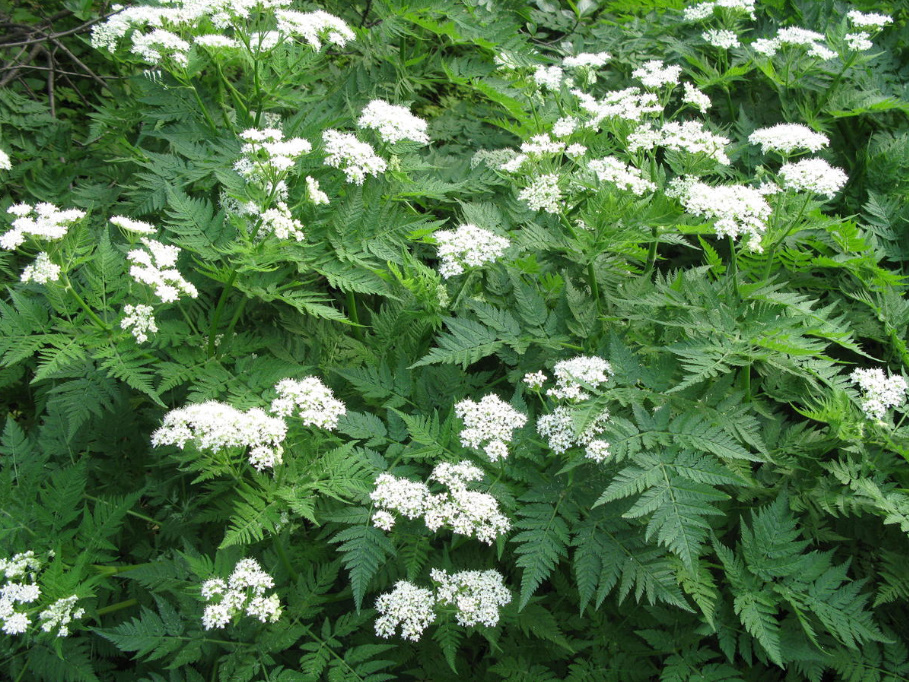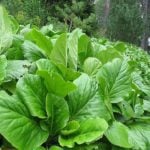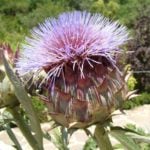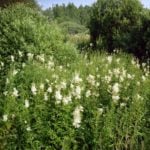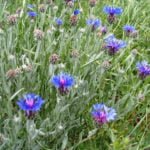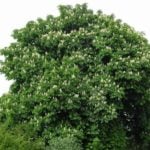Few people know about this plant — Myrrhis odorata. And yet it deserves the widest dissemination.
This is a very unusual Apiaceae plant with a pleasant smell of anise. It is found in the wild in foothill areas throughout Central and Southern Europe, starting from the Pyrenees and even entering the Caucasus. It was brought to England a long time ago, probably by the Romans. In Europe, it is widely bred and easily goes wild.
Myrrhis as a medicinal plant
This plant is interesting for its medicinal effect, it has long been used as a substitute for anise, which has an expectorant, carminative, diuretic, digestive regulating, mild soothing effect.
Some authors, especially English ones, believe that Myrrhis odorata is recommended for elderly people as a medicine that improves the general condition. Indeed, Illicium verum, which is close to it in chemistry, is recommended as a means of enhancing cerebral circulation, it is quite possible that Myrrhis also has such properties. In any case, this is the opinion in England, where this plant is widely used for food.
Even in the Middle Ages, it was believed that a decoction of the root taken orally helps with snake and dog bites. In addition, the juice was used as a wound healing agent for bruises and scratches and to relieve pain with gout, and an alcoholic infusion was considered to increase sexual activity.
Sweet leaves, bitter seeds: Myrrhis in cooking
The Latin name of the plant is derived from the Greek myrhis— bitter, since the seeds of this herb are really bitter. But the English name, on the contrary, emphasizes the sweetness of the Myrrhis foliage, where it is called the name Sweet Cicely borrowed from the Romans – sweet Cecilia.
Myrrhis really has a frankly sweet taste and aniseed smell, which makes it possible to use the plant as a spice and vegetable, and not only the foliage, but also the roots. Myrrhis have large, many—headed, branched, covered with a brown cork, old – fibrous. Stems up to 150 cm tall, branched at the top, with numerous umbrellas.
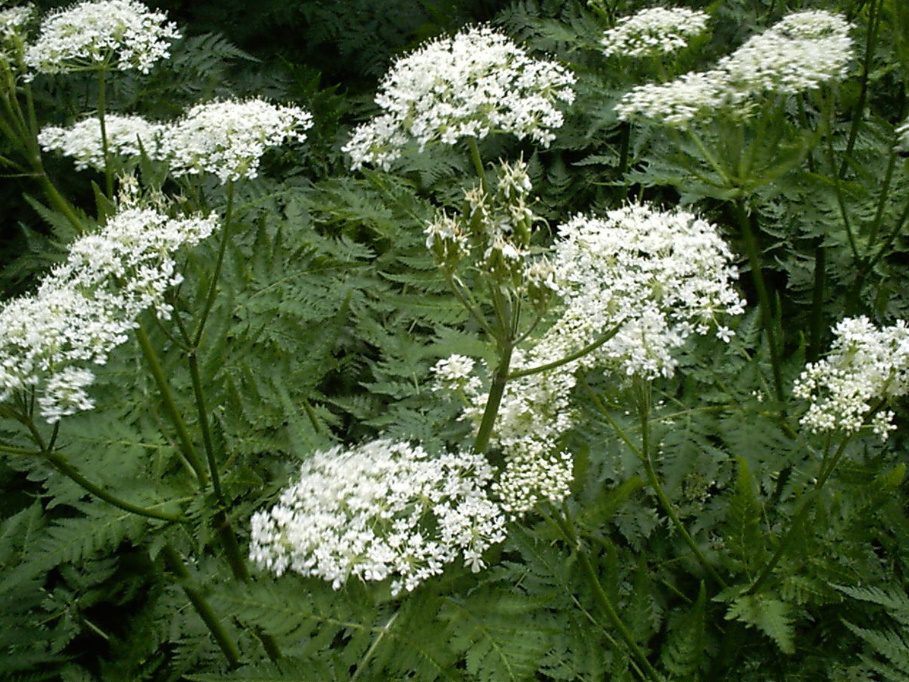
Interestingly, unlike other Apiaceae Myrrhis has bisexual flowers collected in separate umbrellas. In the center of the common inflorescence on a longer peduncle, female flowers are arranged in an umbrella, and around the denser male umbrellas. During flowering, the plant almost completely loses its smell, which is restored after the fruit is tied.
The leaves are large, up to 80 cm across, triangular, four times six-feathered, very similar to a fern, for which they received the name sweet fern in England. In general, in England this plant has 15 folk names, which indicates its great popularity.
In England and southern Europe, Myrrhis is used as a vegetable, greens are put in salads, young roots are boiled. Young, not yet fully bloomed leaves are fried in dough, getting sweet donuts. Tinctures with an aniseed smell are prepared from the dry root, sometimes of a rather complex composition.
Decorative properties and other advantages of Myrrhis
In addition to its undeniable medical and culinary advantages, Myrrhis is surprisingly elegant. Fern-like leaves give the plant decorative effect at any time of spring and summer. At the very beginning of flowering, the leaves have white spots at the base of the leaf blade.

Flowering begins in May, ends in June, fruit ripening begins at the end of September. The fruits of Myrrhis are long, thin, almost black achenes with a pointed tip. In the Middle Ages, they were used for polishing oak floors and furniture, because achenes have hard edges that clean dirt from wood well, and fatty and essential oils give it shine and a pleasant smell. This ancient recipe can still be used today.
Myrrhis reproduces only by seeds, and has one very unpleasant feature: an underdeveloped embryo. It is impossible to influence the speed of its development, therefore, the time of emergence is known only to the embryo itself. Seeds can come up in the second, third year, and maybe later. Self-seeding Myrrhis reproduces just great, sprouting abundantly around the parent bushes, and then in the most unexpected places.
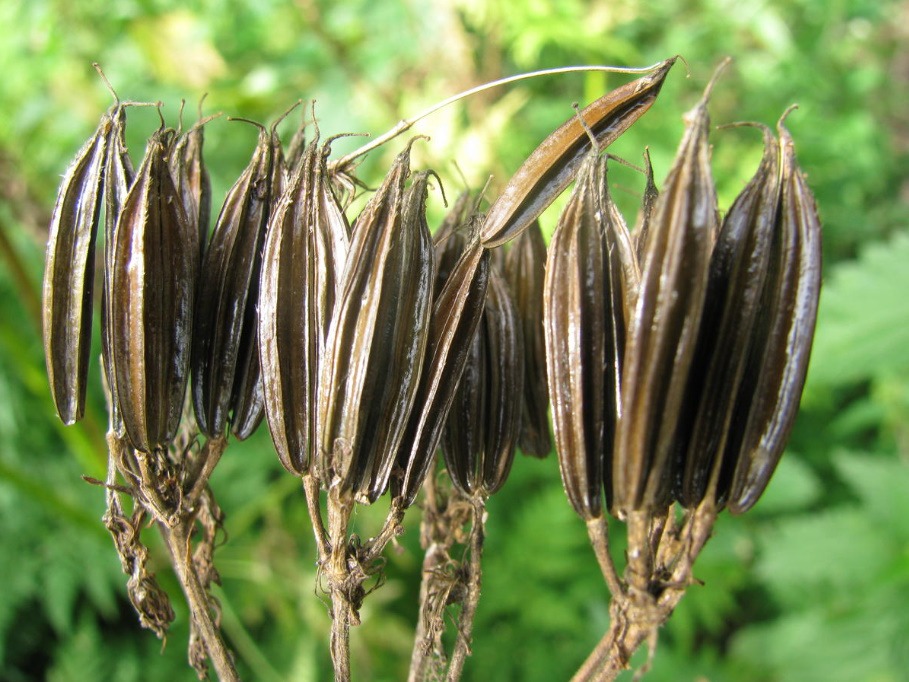
I warmly recommend Myrrhis to you as a universal ornamental plant that tolerates equally successfully dense shade, burning sun, stagnant water and complete drought. Just do not forget to trim it after the end of flowering to get a beautiful thicket of unusual “ferns”.
